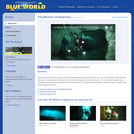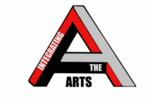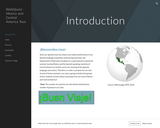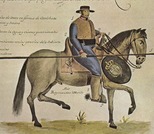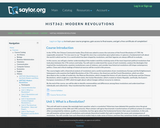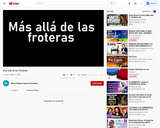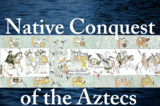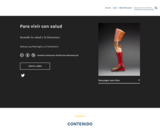leyendo la salud y la literatura
Long Description:
We are asking anyone who adopts this webbook or uses portions of it in their teaching to please let us know at this link (click here).
Para vivir con salud: Leyendo la salud y la literatura is the first textbook to introduce literary and textual analysis of Hispanic literature through the lens of health, illness, and medicine. The book meets the needs of the fast-growing numbers of Spanish majors and minors who are preparing themselves for careers in healthcare, in which they will engage Hispanic communities. These students seek advanced-level study of Hispanic culture and language that prepares them to communicate about health-related issues. While a growing number of literature departments teach Spanish courses with a health focus and most require their majors and minors to take an introductory course in literary or textual analysis, the crucial connection between the study of literature and professionalization in healthcare is generally not being made for or by these students.
The movements of Narrative Medicine and Health Humanities have shown persuasively that healthcare providers benefit from a humanistic preparation that promotes empathy across difference; builds an understanding of how culture, language, and history shape our knowledge of health, illness, and medicine; and trains students in narrative competence to better understand and collaborate with patients and colleagues. Para vivir con salud is designed especially for the often-required Introduction to Hispanic Literature or Introduction to Textual Analysis course in most college Spanish programs, allowing individual sections to be transformed into a learning experience that prepares health professionals and brings them into greater engagement in literary and cultural studies in the Spanish major or minor.
Para vivir con salud includes classics of Hispanic narrative, drama, and poetry—pieces by authors such as Cervantes, Garcilaso, Sor Juana, Martí, Neruda, Castellanos, Pizarnik, and Morejón, less-well-known literary authors and a wealth of other types of cultural texts. While the primary genres of poetry, narrative and drama are well represented, the book includes expository essays, journalism, memoir, testimony, song, film, television, and visual art. It presents voices and experiences from the diverse Hispanic world, including European, Creole, Indigenous, Mestizo, Afro-Hispanic, Latinx, and Jewish perspectives. Selections are almost evenly divided between male and female authors. While the latter half of the twentieth century and the beginning of the twenty-first century comprise a little more than half of the selections, about 20% of the texts pre-date the twentieth century. Seventeen countries are represented, including the United States.
Word Count: 92559
(Note: This resource's metadata has been created automatically by reformatting and/or combining the information that the author initially provided as part of a bulk import process.)
